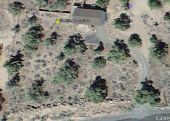








permaculture wiki: www.permies.com/permaculture













The ultimate goal of farming is not the growing of crops, but the cultivation and perfection of human beings. - Masanobu Fukuoka




emerinza wrote:
Thank you Rob and Crispy for your input. Although I may not be able to grow citrus trees, the information you have provided will certainly help me with other plants and trees. I find it interesting how Holzer can grow citrus. I must admit I am a permaculture newbie. Earlier this spring I planted cold hardy trees for Zone 5. I live between Fredericton and Nackawic in New Brunswick. I have Stanley plum, 4 in 1 pear (Flemish Beauty, Bartlett, Anjou, Comice) and Wolf River Apple. I need to get another apple to pollinate the Wolf River. I have been viewing video after video of Holzer's work and read whatever I can find. I value others opinions that have tried his methods. I stumbled upon permaculture by accident looking to see how I could improve my garden spot as it wasn't doing too well. This year I have noticed a difference already...the worms are back. I am hoping some of the things I have learned and implemented into my garden will give me a much better harvest. Thank you both for sharing your information with me and if you have any other advice to offer I am more than willing to listen.
permaculture wiki: www.permies.com/permaculture




 1
1




CrispyCritter wrote: A thing to remember is that mature trees are much more hardy than young trees. The smaller the tree, the more it should be OVER
If I were in your position, I would build the beds as high as possible to block icy winds, put the trees right in the low point of the slope between (keeping in mind the angle of the sun in winter) AND cover them with an enclosure.

Life that has a meaning wouldn't ask for its meaning. - Theodor W. Adorno





 1
1












1. my projects









South Carolina wrote:
fireweed, can you give me some suggestions on my meyer lemon? I thought it had died over the winter in the house - I am not a genuis with houseplants.
So I put the pot outside in the sun and ignored it. The three foot long trunk, thinner than the size of a pencil started putting out small leaves rather rapidly. Then it just quit. And that is where it is now.
This is my second year trying to grow this poor lemon. I am sure that it is something I am doing as every where I read they are supposed to grow like crazy. Help?
P.S., I did have one outside, I should be able to grow outside here, but it croaked.








1. my projects




1. my projects








How permies.com works
What is a Mother Tree ?





Burra Maluca wrote:
Rose - I'm right on the edge of 'citrus country' and I've learned that orange trees aren't truly mediterranean plants. They cope with our winters, just, but they do need some water during the summer. Not often, but if they don't get water, the oranges are dry and disgusting.








 3
3





|
chirp chirp chirp tiny ad chirp chirp
The new purple deck of permaculture playing cards
https://www.kickstarter.com/projects/paulwheaton/garden-cards
|




